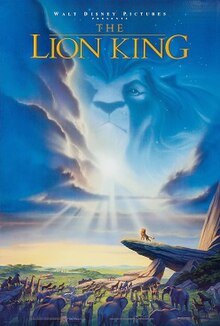In June 1995, Pocahontas was released to the big screen, during the era of The Disney Renaissance. After high hopes generated from The Little Mermaid, Beauty and the Beast, Aladdin, and The Lion King, the film finally premiered to mixed reviews from critics, harsh criticism from historians and Native American activists, and underwhelming box office scores. It was successful at the box office, but it didn't make as much money as The Lion King did the previous year. Today, while the film has it's fans, some consider it to be one of the weakest Disney animated features. So where did the disappointment really come from? Let's find out in this 2 part saga about the making of the film and how the problems resulted.
The Real Pocahontas
Before I talk about the movie, here's a brief summary about the real Pocahontas. Pocahontas was born sometime in the mid 1590's and is the daughter of her tribe's chief' Powhatan. In 1607, the English arrived in Virginia, where she lives, and settled in what is now called Jamestown, and that's pretty much the only thing the film got right. Because it's an animated film for "the whole family", Disney spares no expense into lying to little kids with its artistic license. The real Pocahontas, which was actually her nickname meaning "little brat" or "playful one", was actually about 12 or 13 when she encountered John Smith and they obviously didn't fall in love because that would make the real Smith a pedophile. She also didn't take words of wisdom from a talking tree that doesn't even exist, nor does she have a pet racoon who fights with a spoiled dog over food. And contrary to the film's happy ending, her real life ending didn't end on a high note. The real Pocahontas traveled to England, converted to Christianity, married English colonialist, John Rolfe, and died in 1617 in her early 20's. I'll address more of its historical inaccuracies in part 2, but so far, nice job lying to kids Disney.
Origins, Development, and Disney's Lust for Oscars
The origins of the film dates back shortly after The Rescuers Down Under hit theaters in late 1990. During a pitch meeting for future projects, director Mike Gabriel drew a poster of Tiger Lily from Peter Pan and wrote "Walt Disney's Pocahontas" on the top and pitched the idea in the back of the poster that reads "an Indian princess who is torn between her father's wishes to destroy the English settlers and her wishes to help them - a girl caught between her father and her people, and her love for the enemy." Meanwhile, Disney executive Peter Schneider was developing an animated version of Romeo and Juliet and when he noticed the similarities between his idea and Gabriel pitch, the project was quickly green lit.
In 1991, Beauty and the Beast opened to glowing reviews from critics, made so much money at the box office, and became the first animated film to be nominated for Best Picture. But when the Oscar ceremony took place in March 1992, Beauty and the Beast lost to The Silence of the Lambs. But no worries, because when Pocahontas was put into production, Disney's then chairman and head of the film division, Jeffery Katzenberg, had so much high hopes for this film, that he hoped that it would be the first animated film to win an Oscar for Best Picture. The studio's top animators choose to work on Pocahontas because they feel that it would be more prestigious, commercially viable, and more mainstream than the "B" film that was in production at the same time. Yeah, what was that "B" film?
Yes, apparently, Disney viewed The Lion King as just an experiment and they really weren't sure that people are going to see the film. Probably to test the waters, The Lion King opened first in June 1994. Little did they know that The Lion King has turned out to be one of the most critically and commercially successful animated films of all time, creating a cultural phenomenon despite allegations of plagiarism of the Japanese anime series Kimba The White Lion and an infamous, controversial negative review of the film on YouTube. But those are stories for another time. Sadly, The Lion King also marked the end of Jeffery Katzenberg's tenure at Disney, as he clashed with CEO Michael Eisner over the president's job after a helicopter crash killed Disney executive Frank Wells in April 1994. Frustrated with Eisner, Katzenberg left Disney in the fall of 1994 and co founded DreamWorks along with Steven Spielberg and music producer David Geffen.
Release, High Expectations, and Disappointment
Following The Lion King's marketing strategy, Disney began to hype the movie by using the "Colors of the Wind" sequence as the film's teaser trailer. This tactic was so clever that the teaser even appeared on the original video version of The Lion King. Expectations and hype has just gotten bigger.
On June 10, 1995, the film premiered at Central Park in New York City, with 100,000 people attending the screening. The film also had tie ins from Burger King, Nestle, dolls from Mattel, and even video games for the Sega Genesis and Super Nintendo. When the film finally opened nationwide 13 days later, it opened with mixed reviews. There was praise for the animation and songs, but they expressed disappointment with it's story and characters. Even Roger Ebert, who gave it 3 stars out of 4, didn't even like the film's villain.
There was also criticism from historians and Native American groups for Disney's interpretation of history. As far as the box office returns goes, it was successful, but it made less than The Lion King, grossing $141 million domestically while The Lion King made over $1 billion worldwide. Despite the film's shortcomings, it won 2 Oscars for Best Original Song and Best Original Score.
Stay tuned for part 2, where I convey my thoughts on the film.






Very good overview
ReplyDelete